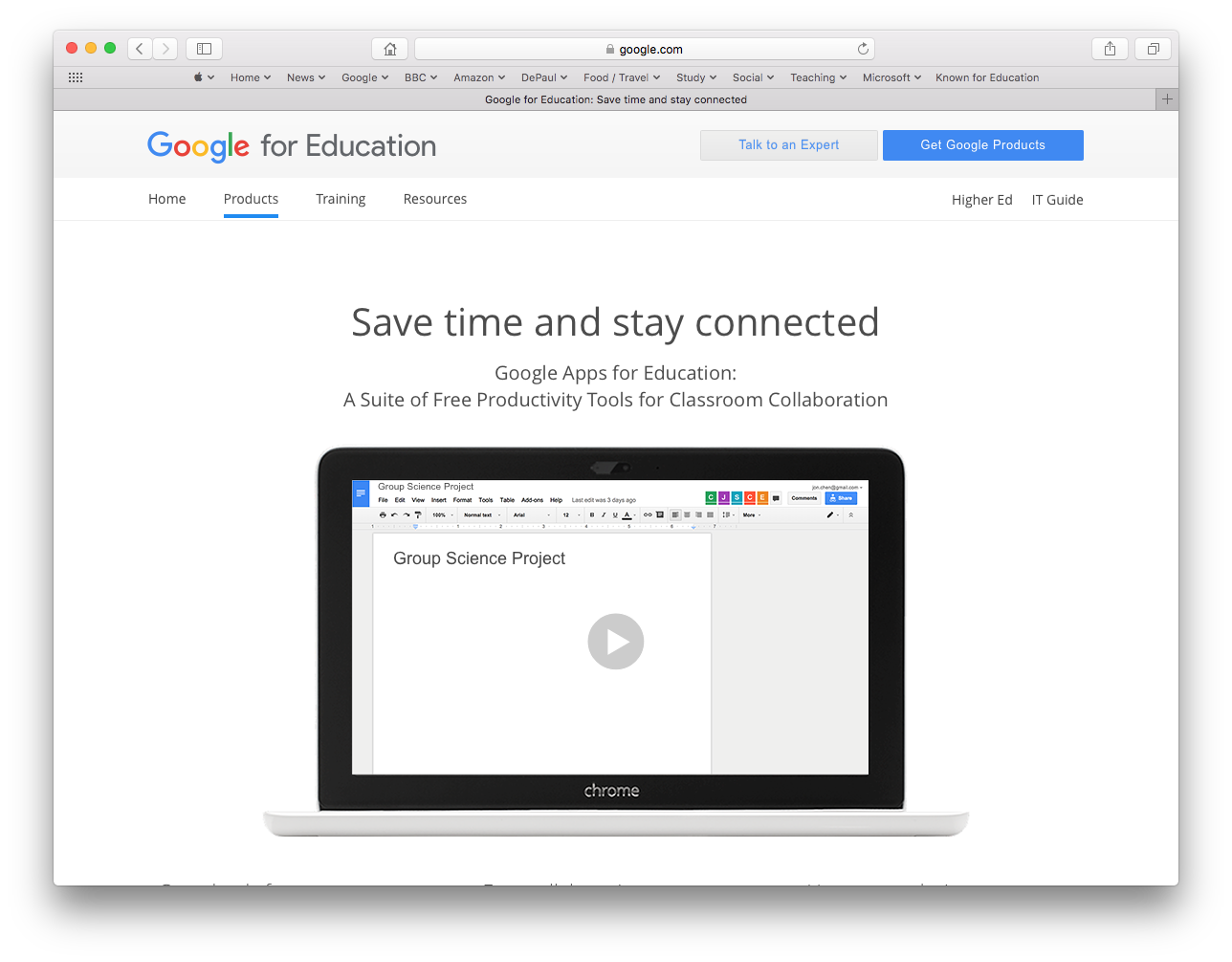
Over the weekend I received a request from a colleague that our university adopt Google Apps for Education. There are significant arguments either side of the adoption debate, and I am starting (again) to aggregate some sources of information and data.
Song Gao (Ph.D. student at Auburn University) has created a rather useful Google Apps customers list on GitHub. The ability to search and filter is helpful (but some entries in the list to not have an associated city or state).
Foremost on my mind is the current legal action where university students are suing Google because the company allegedly scanned their email without consent. According to Google, “Google Apps for Education services don’t collect or use student data for advertising purposes or to create ads profiles” (although my understanding is that this is a configuration setting). The EFF thinks differently, and in 2015 launched their “Spying on Students” project.
I have not looked to closely into the cost of moving to Google Apps for Education, but the University of Michigan does say this about their decision:
Except for some limited specialty features–such as enhanced security and archiving–Google Apps for Education is provided at no charge to U-M. The business case cost analysis and financial projections estimate that for an initial investment of $1.8 million the university will realize ongoing cost savings of approximately $750,000 annually. Savings are achieved through the elimination of non-productive, redundant services, some decrease in infrastructure expenditures, and by leveraging the delivery options of Google’s cloud computing services.
Ultimately Google marches on, with Chromebooks now outselling Macs for the first time in the U.S.